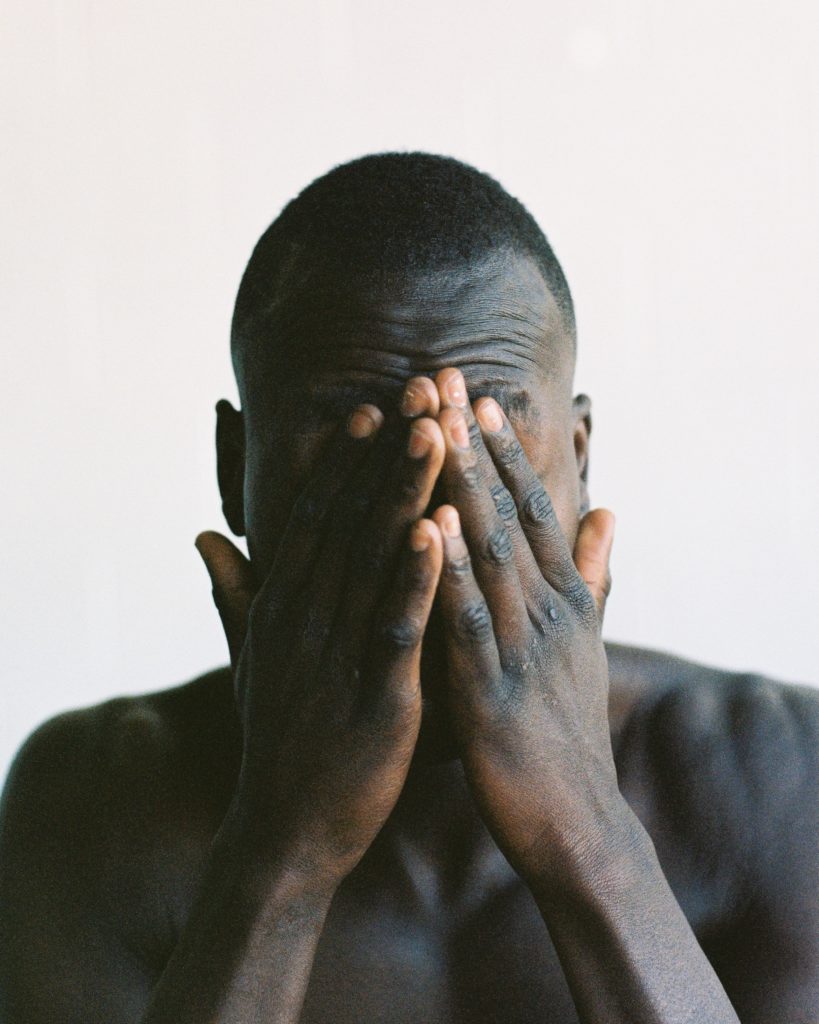
Do you carry stress in your body? Silly question, right? I mean we all do. Sometimes we don’t even realize we do until we actually try to relax.
Maybe you’ve been clenching your fists at your side while giving a big presentation in front of your boss. Or your shoulders and neck go rigid as soon as you get a self-tape audition. Or you have a terrible migraine because you’ve been grinding your teeth all night while you sleep. Or maybe your back goes out at the most inopportune moment, right before a big opportunity.
There is a clear connection between muscle tension, pain and our emotions. Stressful situations trigger the release of cortisol and adrenaline and an involuntary tightening of the muscles in our neck, shoulders, and around our spine.
It’s our body’s way of preparing for a fight (or flight), and it’s a totally natural reaction… and pretty badass, if you ask me! It is designed to fade away when we feel safe and relax.
However, when you are chronically stressed out, it’s like pulling a rubber band taut for an extended period—it can stretch so much it has a hard time going back to its original shape, or worse, it snaps. In our bodies, this results in back pain, pulled muscles and spasms, and headaches (and let’s not forget burnout!).
And if you already suffer from anxiety and depression, this could make your symptoms worse, or vice versa! In fact, the longer we suffer from pain, the more likely our brain will switch “away” from the pain-related circuits to the ones that handle our emotions. This explains why we may feel on edge, impulsive, anxious and snappish when we’re in pain. It becomes all-consuming to our minds.
According to one study, up to 80% of us will experience at least one episode of debilitating lower back and/or neck pain in our lifetime. And it can cost us time, money, and energy better spent on our passions. As creative people, and especially for actors where the body is an extension of our acting instrument, it’s important that we feel healthy and at ease, to get those creative juices flowing (and keep them flowing :).
Now I know if I said to you, “Just relax. Right now. Do it,” you’d probably roll your eyes at me and say, “Yeah right, I’ll get right on that.” 😂 We can’t command our bodies to relax any more than we can pause our restless brains on a whim… but you can train them!
Of course, yoga, meditation, foam rolling, therapeutic baths and a variety of breathing exercises can also help with stress and muscle tension, but there are a few alternative relaxation techniques you may not have heard or thought of!

Biofeedback
Biofeedback is a mind–body technique that helps you gain more control over your body’s involuntary reactions to stress. It is a non-invasive and non-drug therapy that gathers information about your heart rate, respiration, perspiration, brain activity and muscle tension (all the key ingredients to how you respond to stressful situations) as you practice relaxing.
Research has shown that biofeedback can improve cognitive processes in patients with ADHD, emotional control in those who suffer from anxiety or mood disorders, and coping in patients with chronic back pain.
Since this form of therapy is done under the supervision of a therapist with electrical sensors to measure the body’s responses, it may not be for everyone. Sessions typically range from $35 to $85 per biofeedback session, depending on the expertise of the therapist. There are also in-home biofeedback devices and wearables available, just be sure to research their health claims before you hand over any cash.

Progressive Muscle Relaxation
One relaxation technique you can try at home is progressive relaxation. If you’re an actor, you have probably heard of this before or done it in a class (or seven, ha!). It involves tensing your muscles, one body part at a time, and releasing them to achieve a state of bliss and flow.
Find a comfortable place to sit, where you can rest your feet on the ground. I recommend a chair so that nothing obstructs your movement, but you can sit on the edge of your bed or on a couch too. Let all your muscles hang loose and heavy. Take a few deep breaths and let them out with a big ol’ sigh.
Now we’re going to move from your tippy-top down your body, tightening specific body parts and then releasing them. As you relax in each area, savor the relief as stress leaves your body. You should feel pretty light and fluffy when this is over, and also, don’t judge your reactions whatever they are.
Begin by wrinkling your forehead, and then release.
Frown and crease your brows, and then release.
Shut your eyes tight, and then relax them, but keep them closed.
Clench your jaw, and then release.
Press your tongue to the roof of your mouth, and then release.
Press your lips together tight, and then release.
Lift your head back as far as it can go to create some (non-painful) tension in the neck.
Roll your head to the right… then the left … then bring your chin down to your chest.
Return your head forward and take a moment to digest how you’re feeling.
When you’re ready to continue, shrug your shoulders up, hold for a moment, and then release.
Shrug your shoulders up again and move them around a little this time. Maybe do a light shimmy or gently rock them front and back. Then release them.

This relaxation technique is great for keeping a migraine at bay, if you’re struggling to fall asleep, or if you’re chained to a desk from 9 to 5. You can also continue progressing all the way down your body until you reach your toes, falling deeper and deeper into a relaxed state.
Have you ever tried one of these relaxation techniques? Did they bring you any relief from stress, muscle tension or pain? Let me know your experience, and how I can support you, by posting in the comments below or in The Badass Beauty Club on Facebook.
LOVE + relaxation!


+ show Comments
- Hide Comments
add a comment